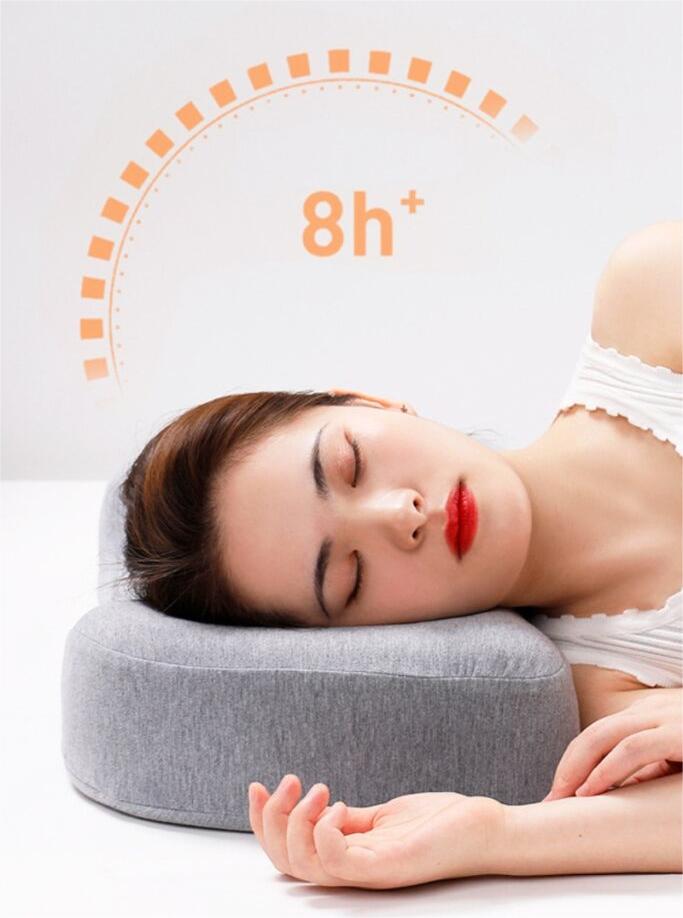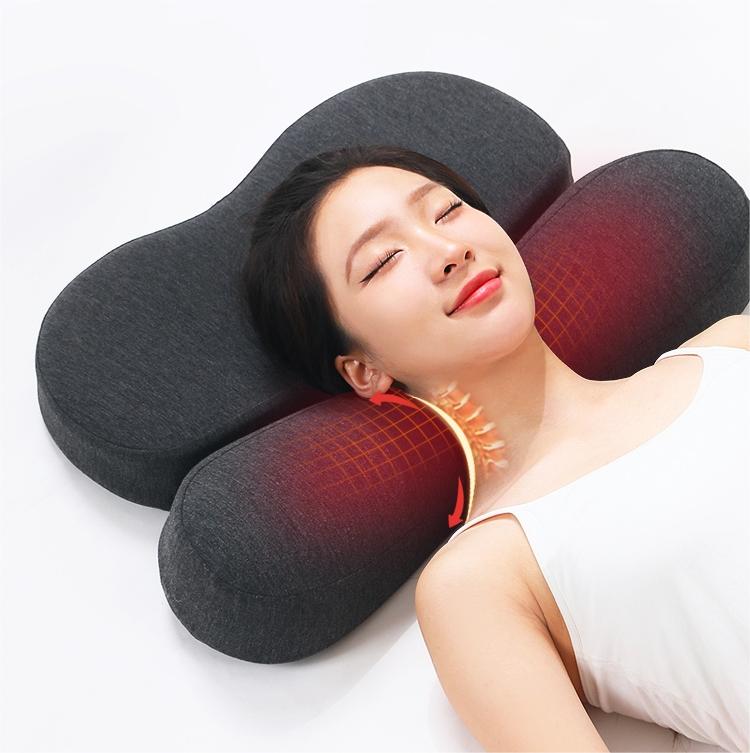Waking up with a stiff neck or persistent cervical pain can turn your day into a challenging ordeal before it even begins. If you’re among the millions who struggle with cervical neck pain, you know that finding the right pillow isn’t just about comfort—it’s about reclaiming your quality of life. But with countless options flooding the market, how do you identify the best pillow for cervical neck pain? At aimyComfort, we understand that the journey to pain-free sleep is personal and often frustrating. That’s why we’ve created this comprehensive guide to help you navigate the world of cervical support pillows. Whether you’re a side sleeper, back sleeper, or somewhere in between, this article will equip you with the knowledge to make an informed decision and take a significant step towards better sleep and reduced neck pain.

Understanding Cervical Neck Pain and Its Relation to Pillows
Before diving into pillow options, it’s crucial to understand the connection between cervical neck pain and your choice of pillow:
- Cervical spine anatomy: The cervical spine’s natural lordotic curve (15-20 degrees) and its need for support
- How poor pillow choice contributes to neck pain:
- Misalignment of the spine, potentially leading to nerve compression
- Muscle strain from awkward sleeping positions, causing tension and soreness
- Pressure points leading to discomfort and reduced blood flow
The right pillow plays a vital role in maintaining proper cervical alignment, reducing strain on muscles and ligaments, and promoting healing during sleep. Studies have shown that appropriate pillow support can reduce morning pain intensity by up to 60% in chronic neck pain sufferers.
Key Features to Look for in a Cervical Support Pillow
When searching for the best pillow for cervical neck pain, consider these essential features:
Contoured Design:
- Supports the natural curve of the neck (15-20 degrees lordosis)
- Helps maintain proper spinal alignment
Adjustable Loft:
- Accommodates different sleeping positions (ideal height range: 4-6 inches)
- Allows for customization based on individual needs
Firmness:
- Provides adequate support without being too rigid (medium-firm is often ideal)
- Balances comfort with therapeutic benefits
Material:
- Memory foam, latex, or specialized materials for pressure relief
- Breathability to prevent heat buildup (look for open-cell structures or cooling technologies)

Top Pillow Types for Cervical Neck Pain Relief
Let’s explore some of the most effective pillow types for addressing cervical neck pain:
a) Contoured Memory Foam Pillows:
- Pros: Excellent support, conforms to neck and head shape
- Cons: Can retain heat, may have an initial odor
- Effectiveness: Studies show up to 40% reduction in neck pain intensity
b) Water Pillows:
- Pros: Highly adjustable, provides consistent support
- Cons: Can be heavy, requires maintenance
- Effectiveness: Research indicates improved sleep quality and reduced morning pain
c) Buckwheat Pillows:
- Pros: Highly moldable, good air circulation
- Cons: Can be noisy, may feel too firm for some
- Effectiveness: Shown to improve cervical curve and reduce pain in some studies
d) Latex Pillows:
- Pros: Durable, naturally hypoallergenic, good support
- Cons: Can be expensive, may not be suitable for latex allergies
- Effectiveness: Offers similar benefits to memory foam with better temperature regulation
e) Cervical Roll Pillows:
- Pros: Excellent for targeted neck support, versatile use
- Cons: May not provide full head support, requires adjustment period
- Effectiveness: Particularly beneficial when used in conjunction with a regular pillow
Matching Pillow Choice to Sleeping Position
Your preferred sleeping position plays a crucial role in determining the best pillow for cervical neck pain:
a) Back Sleepers (15% of population):
- Ideal: Medium-loft pillows with cervical support (4-5 inches)
- Look for: Contoured pillows with a lower center and raised edges
b) Side Sleepers (65% of population):
- Ideal: Higher loft pillows to fill the gap between head and shoulders (5-6 inches)
- Look for: Pillows with adjustable filling or ergonomic designs for side sleeping
c) Stomach Sleepers (7% of population):
- Ideal: Very thin, soft pillows or no pillow at all (1-2 inches)
- Look for: Pillows designed to discourage stomach sleeping or transitional pillows
d) Combination Sleepers (13% of population):
- Ideal: Adjustable pillows that can accommodate position changes
- Look for: Shredded memory foam or adjustable water pillows

The Role of Pillow Materials in Neck Pain Relief
The material of your pillow can significantly impact its effectiveness in alleviating cervical neck pain:
a) Memory Foam:
- Conforms to neck and head shape
- Provides consistent support throughout the night
- Density range: 3-5 lbs/ft³ for optimal support
b) Latex:
- Offers a balance of softness and support
- Naturally resistant to dust mites and mold
- Look for 100% natural latex for best results
c) Polyester Fiber:
- Affordable and easy to care for
- May not provide sufficient support for severe neck pain
- Best when used in combination with supportive core materials
d) Down and Feather:
- Soft and moldable
- May lack the firm support needed for cervical alignment
- Consider as a top layer over a supportive core for comfort
e) Specialized Materials:
- Cooling gels, phase-change materials, or proprietary blends
- Can offer additional benefits like temperature regulation (ideal range: 60-67°F)
Additional Considerations for Choosing a Cervical Support Pillow
Beyond the basic features, consider these factors when selecting your pillow:
a) Pillow Size:
- Should match your body size and bed dimensions
- Standard size (20″ x 26″) works for most, but consider Queen (20″ x 30″) for larger frames
b) Durability and Longevity:
- Look for high-quality materials and construction
- Consider warranties (2-5 years is standard) and expected lifespan (2-3 years for most pillows)
c) Ease of Cleaning:
- Removable, washable covers are ideal
- Some pillows are entirely machine washable (follow care instructions carefully)
d) Trial Periods and Return Policies:
- Many companies offer sleep trials for pillows (30-100 nights is common)
- Ensures you can find the right fit without financial risk
e) Complementary Products:
- Consider how the pillow works with your mattress and other sleep accessories
- Some pillows come as part of a sleep system for comprehensive support
Lifestyle Changes to Complement Your Pillow Choice
While the right pillow is crucial, combining it with these lifestyle adjustments can enhance its effectiveness:
- Proper sleep posture education (maintain neutral spine alignment)
- Regular neck stretches and exercises (aim for 10-15 minutes daily)
- Ergonomic improvements in daily activities (e.g., computer use, reading)
- Stress reduction techniques to alleviate muscle tension (meditation, progressive muscle relaxation)

When to Consult a Healthcare Professional
While the right pillow can significantly alleviate cervical neck pain, it’s important to know when to seek medical advice:
- Persistent pain despite pillow changes (lasting more than 6 weeks)
- Radiating pain or numbness in arms or hands
- Severe pain or sudden onset of symptoms
- Pain accompanied by other concerning symptoms (fever, unexplained weight loss)
A healthcare professional can provide a comprehensive evaluation and may recommend additional treatments or therapies to complement your pillow choice.
Conclusion:
Finding the best pillow for cervical neck pain is a crucial step towards improving your sleep quality and overall well-being. By understanding the key features to look for, considering your sleeping position, and exploring different materials and designs, you can make an informed decision that addresses your unique needs.

